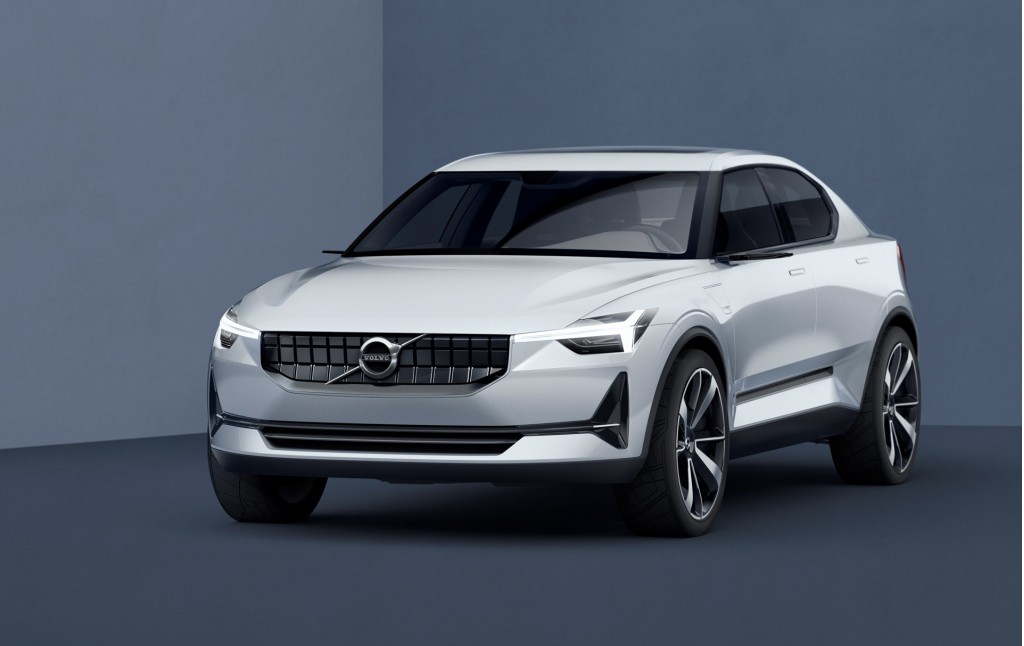The electric car that Volvo has long planned for 2019 could join a growing group of long-range, mass-market models like the Chevrolet Bolt EV, the upcoming Tesla Model 3, and the second-generation Nissan Leaf.
The Swedish automaker has concentrated on plug-in hybrids for the most part thus far, but plans to launch a production electric car within two years.
That car will have a range of at least 200 miles, and a starting price of $35,000 to $40,000, Volvo Cars USA CEO Lex Kerssemakers told journalists.
CHECK OUT: Volvo will build compact electric car in 2019, along with larger model (May 2016)
Those range and price targets are a "prerequisite" for the Volvo electric car to be successful in the U.S., Kerssemakers told Automotive News (subscription required).
It's unclear if the 250-mile range that he quoted on the sidelines of the recent 2017 Geneva Motor Show was measured on the U.S. EPA testing cycle, or the much more optimistic European Union NEDC protocol.
The latter seems more likely, in which case a comparable U.S. EPA figure would be lower—likely somewhere around 200 miles.
UPDATE: In later correspondence to clear up this question, Automotive News reporter David Undercoffler wrote: "Given the context and how [Volvo's Kerssemakers] was talking about U.S. consumers’ mindsets (his only focus), I’m nearly positive this was for the EPA cycle."
"It wouldn’t have made any sense for him to reference those numbers for any other cycle," he continued. "Plus ... he’s blunt, so I feel like he would have adjusted the number to U.S. relevance no matter what."

2018 Volvo XC60
While Kerssemakers seemed adamant about the range and price figures he quoted, other aspects of the electric car are reportedly still up in the air.
Volvo has not even decided whether the electric car will be a dedicated model, or a variant of an existing model, according to Automotive News—making a 2019 launch a very quick development indeed.
Whatever form it takes, the Volvo electric car will use one of the two modular platforms that will underpin virtually all of the company's new models henceforth.
ALSO SEE: Volvo's ambitious sales plans: 1 million electric & plug-in hybrid cars by 2025 (Apr 2016)
They are known as "SPA" (Scalable Product Architecture) and "CMA" (Compact Modular Architecture).
SPA is currently used by the XC90 SUV, S90 sedan, and V90 wagon, and will underpin a series of smaller mid-size models as well.
These include the redesigned XC60 SUV just unveiled in Geneva, as well as next-generation versions of the related S60 sedan and V60 wagon.

Volvo 40.2 concept
The smaller CMA architecture will underpin compact models likely to be sold under "40"-series nameplates.
Volvo has not confirmed whether models based on the CMA platform will be sold in the U.S., which may indicate the 2019 electric car could be based on the larger SPA platform.
But the automaker may eventually launch multiple all-electric models, based on both platforms, during the 2020s.
DON'T MISS: Volvo's next plug-in hybrids: 3-cylinder engine, smaller cars
At least some of those will be targeted at the Chinese market, now the world's largest, and home to Volvo's parent company Geely.
While the larger SPA underpinnings are limited to Volvo products alone, the smaller CMA system will be used for Geely cars as well as Volvos.
The Swedish brand will sell its all-electric models alongside a growing array of plug-in hybrids, which it has offered in Europe since 2012.

2018 Volvo V90
The automaker's T8 "Twin Engine" powertrain—based around a 4-cylinder gasoline engine with all-wheel drive—is already used in the XC90, S90, and V90.
Volvo also plans to launch a front-wheel drive plug-in hybrid powertrain with a 3-cylinder engine for models based on the CMA platform.
All of these models will contribute to Volvo's goal of selling a total of 1 million electric cars and plug-in hybrids by 2025.
_______________________________________________












